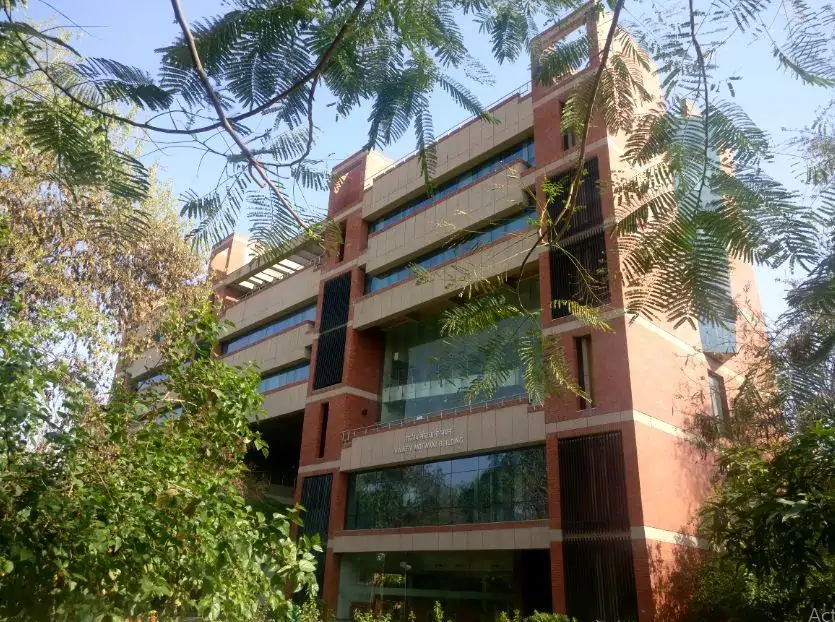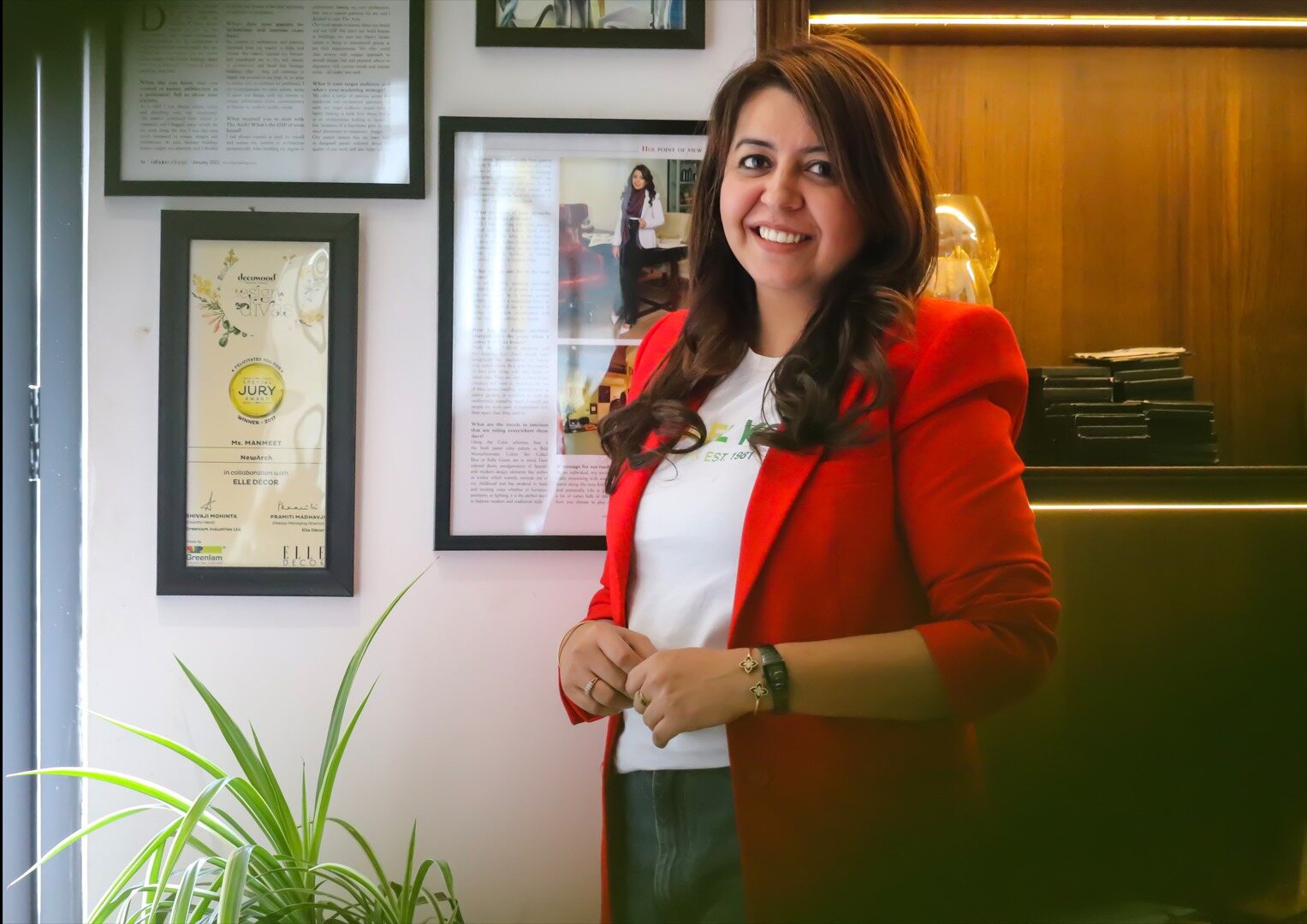Architect Tanuja B.K. is a partner at the studio practice of Kanvinde, Rai & Chowdhury based in New Delhi. Through their work as architects, Kanvinde, Rai & Chowdhury aims to create a sustainable built environment with architecture materials, that have positive impacts on the user. Tanuja, along with partner Sanjay Kanvinde has been pursuing a holistic approach to projects of varying size and nature.

Some of the recent major sustainable built environment projects of the firm have been award-winning competition entries like Instem – Stem Cell Research Centre at Bengaluru completed in 2019, Research Lab Complex at IIT Kanpur, Research Park at IIT Gandhinagar, and Master Plan and Academic Complex for IIT Bhilai.

IIT Bhilai is a greenfield project sited on 362 acres. It was awarded the 2020 GRIHA Exemplary Performance Award in 3 categories – for Passive Architecture Design, for Energy Management, and Integrated Water Management.
Architect Tanuja B.K. has been actively involved in academics as a Visiting Professor at the School of Planning and Architecture, New Delhi for over 2 decades. She is the President-Elect, Institute of Indian Interior Designers (IIID), National Executive Council for term 2019-2021. In addition, she has been a Chairperson of the IIID Delhi Regional Chapter from 2012-15 and Chairperson of IIID National Awards Committee and IIID Education Committee for the term 2015-19.
In an exclusive interaction with BuildingandInteriors.com, Architect.Tanuja B.K. talks about the changing roles of Architects in projects, challenges in materials space, and more.
Changing role of Architects in projects over the last 10 years
For a long time, an Architect was the leader on a project. With the increase of complexities in a project, this scenario has been gradually changing, to the current scenario. As a result, the architect is one of the players in a project. In the context of a commercial project, this scenario is even more pronounced. Moreover, the number of agencies in a project has increased manifold. Thus, today it is the Project Managers who play the key role of managing all agencies and is the go-to agency for a job. They are at the center stage, starting with identifying and appointing an Architect, followed by quantification, identifying contracting firms, awarding work/ managing the work, supervision, etc. Today, the Architect is primarily responsible for designing the project. Also, he ultimately establishes a USP that makes the difference to the project, the client, and the users.
As an Architect, I find that the Clients/Promoters are abreast with the latest trends giving challenging briefs for the project. Thus, the Architect, with a conscious effort, can make a difference to the project by not only making it functional but creating a joyous, sustainable, and green habitat.
The materials challenge for Architects
What I personally find very challenging is the huge influx of new materials in the market. Moreover, products are in the market without sufficient research and they disappear rapidly too.
On large projects, where the time span between the design of a project to execution is comparatively long, the products you have considered at Design Stage, specified at the tender stage have disappeared by the time you have reached the procurement/execution stage. There is a fair amount of rework then. So, for a practice like ours, where sustainable built environment materials/ products that are green/ long-lasting and aesthetic are of prime importance, the fast-changing material market is a challenge.
There is also an influx of information especially since a lot is on digital media. There are very few dependable digital media platforms. And that sometimes makes the reliability of the available digital information questionable. The other issue of operating in the physical spaces is the rapid changeover of the marketing/sales executives. Even before you build a working equation they have moved on and there is a disconnect.
Materials – the road ahead
I feel the kind of materials that will find favour in the commercial project segment are the pre-finished/ quick to assemble and execute site, dry construction, and limited use of site fabricated products and jugaad.

Pointers for smoother project execution
As I have said, the project work today has a lot of complexities, both from a material and execution point of view linked to financial implications. Therefore, my checklist for a smoother project execution would include:
- an enlightened/aware client
- a team of specialist consultants
- clarity in thought
- an honest intent
- a good quality conscious executing agency
- foolproof project planning & methodology
Schools of Architecture need to put more emphasis on up-to-date materials understanding
It is a major concern that many Schools do not have a material lab/ full-fledged laboratory/hands-on experience/ site visits etc. It is extremely important for the students to have a touch and feel of any product. Additionally, they must see its potential and limitations and keep abreast with the latest. For this to happen, the Schools also need to partner and have an understanding of the Industry, to display their latest products from time to time/ arrange for factory visits to familiarize themselves with the process of production, walk the design with the designers, etc.
On digital information
It is undoubtedly a great advantage to get information on the digital platform. Also, the more products of similar kind that are assessed, the more is the usefulness. Performance and costs can be interesting additions to such information. Maybe the suppliers can use digital platforms to provide elaborate material and product information for the ease of decision-making in product selections.
Even for the schools, I feel that information available through digital platforms is quite useful. Digital platforms play an important role in introducing and explaining the latest materials and products to young upcoming Architects. The schools need to integrate that available information with practical orientation. This gap definitely needs to be bridged. It is time for all stakeholders to come together and build synergy.


























